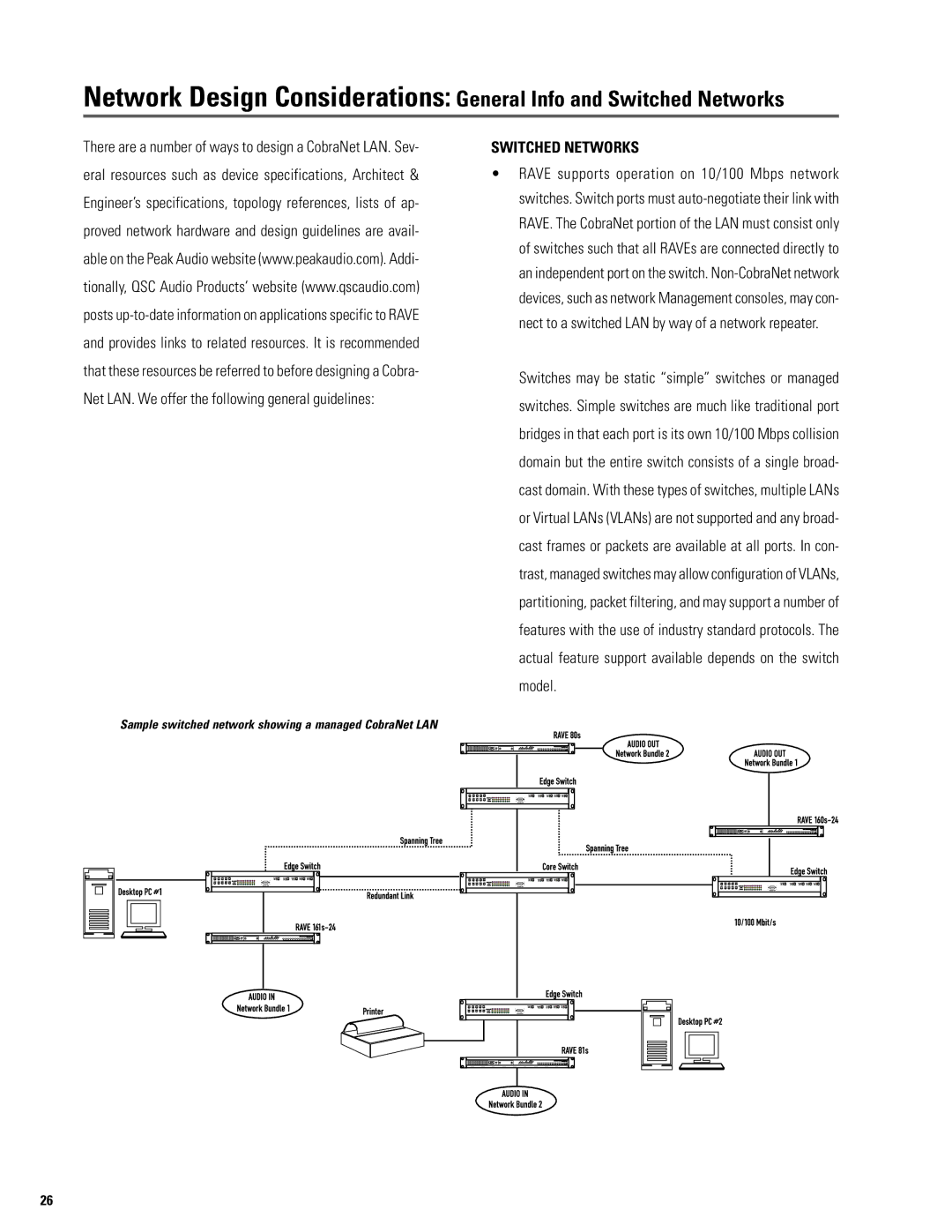
Network Design Considerations: General Info and Switched Networks
There are a number of ways to design a CobraNet LAN. Sev- eral resources such as device specifications, Architect & Engineer’s specifications, topology references, lists of ap- proved network hardware and design guidelines are avail- able on the Peak Audio website (www.peakaudio.com). Addi- tionally, QSC Audio Products’ website (www.qscaudio.com) posts
Sample switched network showing a managed CobraNet LAN
SWITCHED NETWORKS
•RAVE supports operation on 10/100 Mbps network switches. Switch ports must
Switches may be static “simple” switches or managed switches. Simple switches are much like traditional port bridges in that each port is its own 10/100 Mbps collision domain but the entire switch consists of a single broad- cast domain. With these types of switches, multiple LANs or Virtual LANs (VLANs) are not supported and any broad- cast frames or packets are available at all ports. In con- trast, managed switches may allow configuration of VLANs, partitioning, packet filtering, and may support a number of features with the use of industry standard protocols. The actual feature support available depends on the switch model.
26
